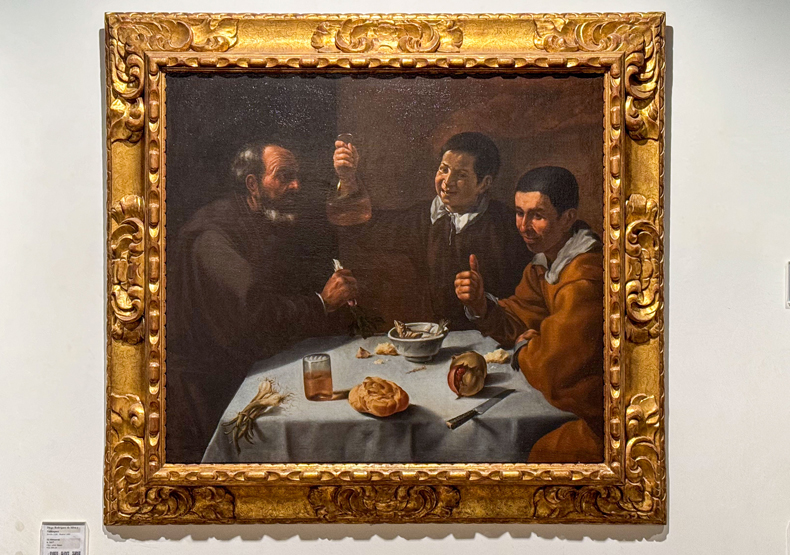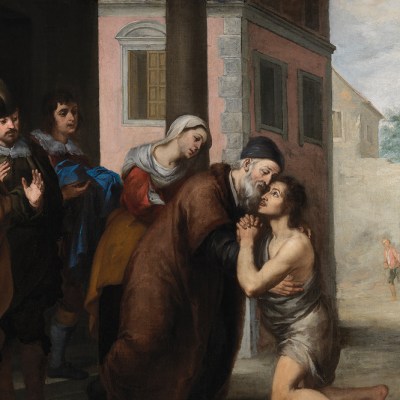From the September 2024 issue of Apollo. Preview and subscribe here.
The venerable sherry-making industry in Jerez de la Frontera is so entwined with the culture of the place that locals have developed their own slang around drinking it. Wake up in the morning and be sure to regar la plaza, literally to ‘spray the square’ to keep it fresh, but also code for having a glass of sherry. The day will continue with splashes of vino de pañuelo, or handkerchief wine – a fragrant Amontillado. By the evening, you’ve become a bolisa, a scoundrel who visits tavern after tavern – but hopefully not a gañote, the one who drinks at the expense of others.
In the Bodegas Tradición winery, which dates to the 17th century and produces premium sherry, such phrases could also be part of the chatter going on between the figures who appear in the bodega’s own art collection. Paintings of foremen at rest, fecund maidens offering overflowing fruit baskets, peasants patiently toiling in fields, society ladies raising cordial copitas and even contrarian philosophers – Diogenes makes an appearance – populate one of the largest private collections of Old Masters in Andalucía. The Joaquín Rivero Collection of Spanish art, named after the late founder of the winery, contains some 300 works dating from the 14th to the 19th centuries. It includes works by El Greco, Velázquez, Zurbarán, Goya, Murillo, Sorolla and Picasso, all hung next to the butts in which the wine ages.
The stern Maria Luisa of Parma, the subject of a Goya painting which hangs next to a companion portrait of her husband, Charles IV, in the bodega’s gallery, would certainly disapprove of the vernacular vulgarities of the vocabulario bodeguero. It is said that Goya made these portraits in 1800 and then reproduced them for the Prado, where the later versions hang today. The Bodegas Tradición project ‘is a way of re-evaluating Spanish heritage through art and wine’, as Rivero told his daughter Helena, who now owns the winery. For her, ‘wine, like art, opens the spirit’.
Viewers are invited to peer into a painting of three men at a table – one chews on an onion, the central figure raises a carafe to pour for the viewer and the youngest gives a thumbs up. This is one version of Velázquez’s El Almuerzo (‘The Lunch’) from 1617.
Installation view of one version of The Lunch (1617) by Diego Velázquez at Bodegas Tradición. Courtesy Bodegas Tradición

Nearby, Sorolla’s La Piara (Octobre 1917) presents an impressionistic sketch of pig farmers and their drove. This might look like a bright and breezy celebration of the everyday but for all the light in the painting there is also the shadow of an impending pandemic, revolution, economic crisis and social unrest in Spain. The subject of Julio Romero de Torres’s Lolita Astolfi knowingly grins as she holds her guitar: the bodega is, after all, located in Santiago – the gitano and flamenco dancing neighbourhood of Jerez. In stark contrast, El Greco’s astonishing Saint Francis of Assisi in Prayer (1585) depicts the saint in penitence.
The original bodega’s roots stretch back to the early 1650s. The earliest vintner, Pedro Alonso Cabeza de Aranda y Zarco used his initials, ‘CZ’, to brand first the rumps of his prized Andalusian horses and then the first sherry butt made for the bodega. By 1771 Bodegas CZ was supplying the British royal household with sherry and by 1887 it was also the official supplier to the Spanish royal household.
Following a period of subdued success, in 1998, Joaquín Rivero relaunched ‘CZ’ as Bodegas Tradición CZ. He acquired a historic warehouse in central Jerez and sought out smaller bodegas to find the oldest, most exceptional and often forgotten solera aged-wine butts with which to re-establish the tradition of sherry-making at his own bodega. These ‘very old wines’ became legally recognised categories in 2000 under the appellations ‘VOS’ (Vinum Optimum Signatum) and ‘VORS’ (Vinum Optimum Rare Signatum).
Everything at the bodega is still done in the traditional way, by hand, and the winemaking team is rooted in tradition too: the man responsible for selection and blending is José Ignacio Domecq Fernández de Bobadilla, the son of José Ignacio Domecq González (1914–97), an oenologist of such high renown in Jerez that he was known as ‘The Nose’. Cellarmaster José ‘Pepe’ Blandino has almost 60 years of experience.
The family believes that the artworks in the winery help further develop Spanish cultural identity, like the sherries. Joaquín Rivera sought the rarest and finest solera butts in the region to ensure that his product represented the best of local sherry-making. And through his art collection, he tried to give a flavour of Spain’s contribution to art history. In a way, collecting old wine butts and an archive of winemaking is akin to creating an art collection. ‘I try to make people understand what units of 30 years at a time means,’ Helena Rivero says. ‘Time measured in drink.’
From the September 2024 issue of Apollo. Preview and subscribe here.


